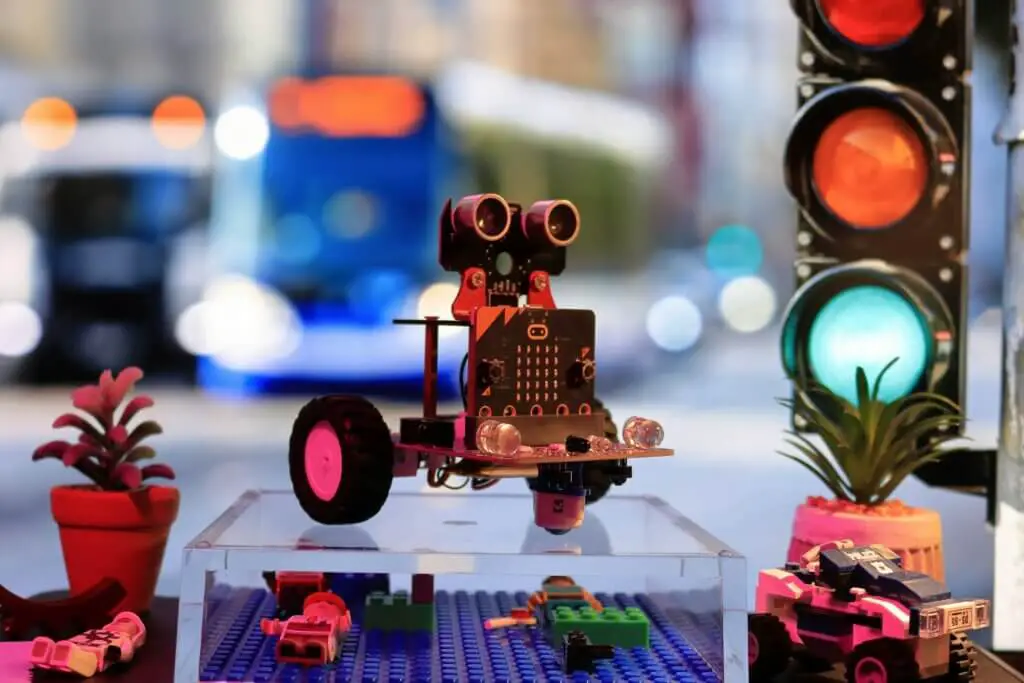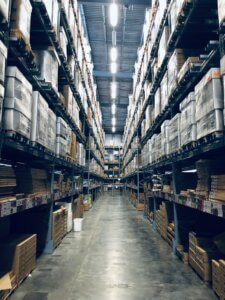We may earn money or products from the companies mentioned in this post.

Warehouse Robots: The Future of Automation
In the rapidly evolving landscape of logistics and supply chain management, warehouse robots have emerged as transformative entities, revolutionizing the way businesses handle inventory and streamline operations. These intelligent machines, equipped with advanced sensors, artificial intelligence, and robotic arms, are designed to perform a myriad of tasks within warehouses, ranging from efficient material handling and sorting to precise inventory management. As technological advancements continue to propel the industrial sector forward, warehouse robots have become integral components in enhancing efficiency, reducing operational costs, and ensuring seamless workflows in the intricate dance of modern supply chains. This introduction explores the pivotal role played by warehouse robots in reshaping the dynamics of the logistics industry, offering a glimpse into the future of automated warehouses and the unprecedented opportunities they present for businesses worldwide.
Efficiency in Warehousing
Robotic technologies have revolutionized warehouse operations by enhancing efficiency in various ways:
- Speed and Precision: Robots are designed to perform repetitive tasks with a high degree of precision and speed. They can efficiently locate, pick, and transport items throughout the warehouse, minimizing errors and reducing order processing times.
- 24/7 Operations: Unlike human workers who require rest and breaks, robots can operate continuously, allowing warehouses to extend their working hours and meet the demands of a globalized market.
- Inventory Management: Robotics can aid in real-time inventory management, ensuring optimal stock levels, reducing overstocking, and avoiding product shortages.
- Task Allocation: Robots can be deployed to handle tasks that are hazardous, dull, or strenuous for humans, thereby improving overall workplace safety and employee satisfaction.

Types of Warehouse Robots
- Automated Guided Vehicles (AGVs): AGVs are mobile robots that autonomously navigate warehouses, transporting goods from one location to another. They follow predefined paths using sensors and cameras, reducing the need for human intervention in material transport.
- Autonomous Mobile Robots (AMRs): AMRs are highly versatile robots capable of navigating dynamically in warehouse environments. They can be programmed to perform various tasks such as picking, packing, and sorting, making them a valuable asset for modern warehouses.
- Robotic Arms: Robotic arms are used for tasks like picking and packing products, manipulating items on shelves, and loading/unloading trucks. These versatile machines are equipped with advanced computer vision and dexterity, allowing them to handle various shapes and sizes of objects.
Examples of Popular Robot Solutions
Locus Robotics
Locus Robotics is a cutting-edge robotics company specializing in the development of autonomous mobile robots (AMRs) designed for warehouse and fulfillment center operations. Founded in 2014, Locus Robotics has become a key player in the logistics industry by offering innovative robotic solutions that optimize order fulfillment processes. The company’s flagship product, the LocusBot, is a collaborative robot that works alongside human workers to increase efficiency in picking, packing, and other warehouse tasks. Locus Robotics’ technology is characterized by its advanced navigation system, real-time data analytics, and seamless integration with existing warehouse management systems. By enhancing productivity, reducing labor costs, and improving overall warehouse operations, Locus Robotics has established itself as a leader in the automation revolution reshaping the logistics landscape.
Fetch Robotics
Fetch Robotics is a prominent player in the field of robotics and automation, particularly focusing on intralogistics solutions. Founded in 2014, the company has gained recognition for its innovative autonomous mobile robots (AMRs) designed to optimize material handling and logistics operations in warehouses and distribution centers. Fetch Robotics provides a range of robotic systems, including the Freight series for moving large payloads and the CartConnect series for material transport. These robots are equipped with advanced sensors and navigation technology, allowing them to navigate dynamic environments, collaborate with human workers, and efficiently execute tasks such as picking, packing, and inventory management. By leveraging cutting-edge robotics technology, Fetch Robotics aims to enhance operational efficiency, reduce labor costs, and contribute to the evolution of smart and agile intralogistics solutions for the modern industrial landscape.

Advantages of Robots in Warehouses
The integration of robots in warehouses provides several advantages for businesses:
- Cost Reduction: Robotics can lead to long-term cost savings as robots can work efficiently with minimal operational costs and maintenance requirements.
- Increased Productivity: Robots complement human labor, improving overall productivity and reducing the likelihood of bottlenecks during peak periods.
- Space Optimization: Efficient use of storage space is vital in warehouses. Robots can navigate narrow aisles and reach high shelves, enabling better utilization of available storage capacity.
- Scalability: Businesses can easily scale their operations by adding more robots as needed, allowing for flexibility in response to market demands.
- Data and Analytics: Robotics systems often come equipped with data collection and analytics capabilities, providing businesses with valuable insights into their operations and aiding in strategic decision-making.
Implications for the Workforce and Society
While robots offer numerous benefits to warehouses, there are several implications for the workforce and society:
- Job Displacement: The widespread adoption of robots in warehouses may lead to the displacement of human workers, particularly in routine and repetitive roles. This raises
 questions about the potential impact on employment in the sector.
questions about the potential impact on employment in the sector. - Workforce Transition: As robots take over certain tasks, there will be a growing need for upskilling and retraining programs to help the workforce adapt to changing job requirements.
- Human-Robot Collaboration: The coexistence of humans and robots in the workplace requires careful attention to issues related to worker safety, collaboration, and job satisfaction.
- Ethical Considerations: The use of robots in warehouses also raises ethical questions, such as the treatment of robots, data privacy, and the responsible use of automation.
Future Prospects
The future of warehouse robotics is promising. With advancements in artificial intelligence, machine learning, and robotics, we can expect even more sophisticated and efficient robots. The development of collaborative robots (cobots) that work alongside human employees is a growing trend, ensuring that humans remain an integral part of the workforce while benefiting from robotic assistance.
The integration of robots in warehouses has brought about significant improvements in efficiency, cost reduction, and productivity for businesses. However, it also raises important questions regarding workforce implications and ethical considerations. As technology continues to advance, it is imperative for businesses, policymakers, and society to work together in ensuring that the benefits of automation are maximized while mitigating potential negative consequences. The future of warehousing lies in a delicate balance between the advantages of automation and the ethical and social responsibilities associated with its implementation.
You Might Also Like – The Growing Robotic Workforce

